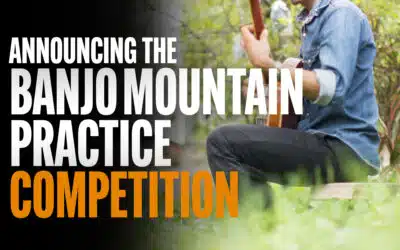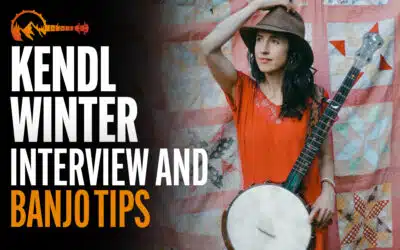When I began my bluegrass banjo journey as an innocent pre-teen, I remember coming across a little ditty called “Little Sadie”. I had recently bought a Doc Watson record (yes, we all listened to vinyl back in those days), and I remember listening to him sing this rueful tale of a man who, while out for a evening stroll, runs into a certain Little Sadie and blows her away with his 44. Pretty intense stuff. And this was just within the first 15 seconds of the song. What added to the gruesomeness of this tune was the fact that the lyric was sung in the first person. Here’s this guy describing very matter-of-factly how he meets Sadie and, right then and there, murders her:
Went out last night one night to make a little round
I met little Sadie and I shot her down
Went back home, jumped into bed
44 pistol under my head
What I found most intriguing/disturbing about this lyric is how the line about killing Sadie is tossed off with an air of cool indifference. Rather than serving as the centerpiece of the tale, the line seems no more than an insignificant (almost irrelevant) detail to our balladeer’s story. And now we’re thinking, “Who’s this Sadie? His wife? A girlfriend? A neighbor who pissed him off? Of course, none of this is ever addressed in the song’s lyrics, which center not on Sadie but rather on our anti-hero’s attempts to flee the authorities and avoid punishment for Sadie’s demise.
According to music historians, the earliest written record of the song dates back to 1922. The following lyric fragment is noted in the 1948 book Ozark Folksongs, Vol. II.
“Bad Lee Brown”
Last night I was a-makin’ my rounds,
Met my old woman and I blowed her down,
I went on home to go to bed,
Put my old canon right under my head.
Jury says murder in the first degree,
I says oh Lord, have mercy on me!
Old Judge White picks up his pen,
Says you’ll never killed a woman ag’in.
FULL ACCESS TO 200+ LESSONS
3 GREAT OPTIONS FOR YOU

Annual Subscription
SAVE OVER 70%Full access to Banjo Mountain (200+ lessons) for $139.95 saving you over 70%.
Bills annually. Cancel anytime.
3-Month Subscription
Full access to Banjo Mountain (200+ lessons) for $75 saving you over 35%.
Bills every 3 months. Cancel anytime.
1-Month Subscription
Full access to Banjo Mountain (200+ lessons) for $40.
Bills monthly. Cancel anytime.
STILL NOT SURE?
Latest From Our Blog
Nora Brown: A Rising Star In The Banjo World
Nora Brown is someone to keep your eye on. Indeed, at a young age, she is already turning heads. Hailing out of Brooklyn, New York, Nora has played festivals all over the country. Don’t let Brooklyn throw you off (no offense Brooklyn-ites). While having urban origins,...
The 1st Banjo Mountain Practice Competition
We are pleased to announce the first Banjo Mountain Practice Competition. This is for Banjo Mountain students. It costs nothing to enter and you can do so once you have subscribed. The goal here is to encourage daily practice by submitting your video for your peers to...
Kendl Winter Interview & Banjo Tips
Video interview with Kendl Winter where she shares tips and advice for banjo players, talks about how she got into banjo, what projects she's currently working on and her upcoming album "Banjo Mantras." Her single "Humming Mantra" will be live September 8th! A...



